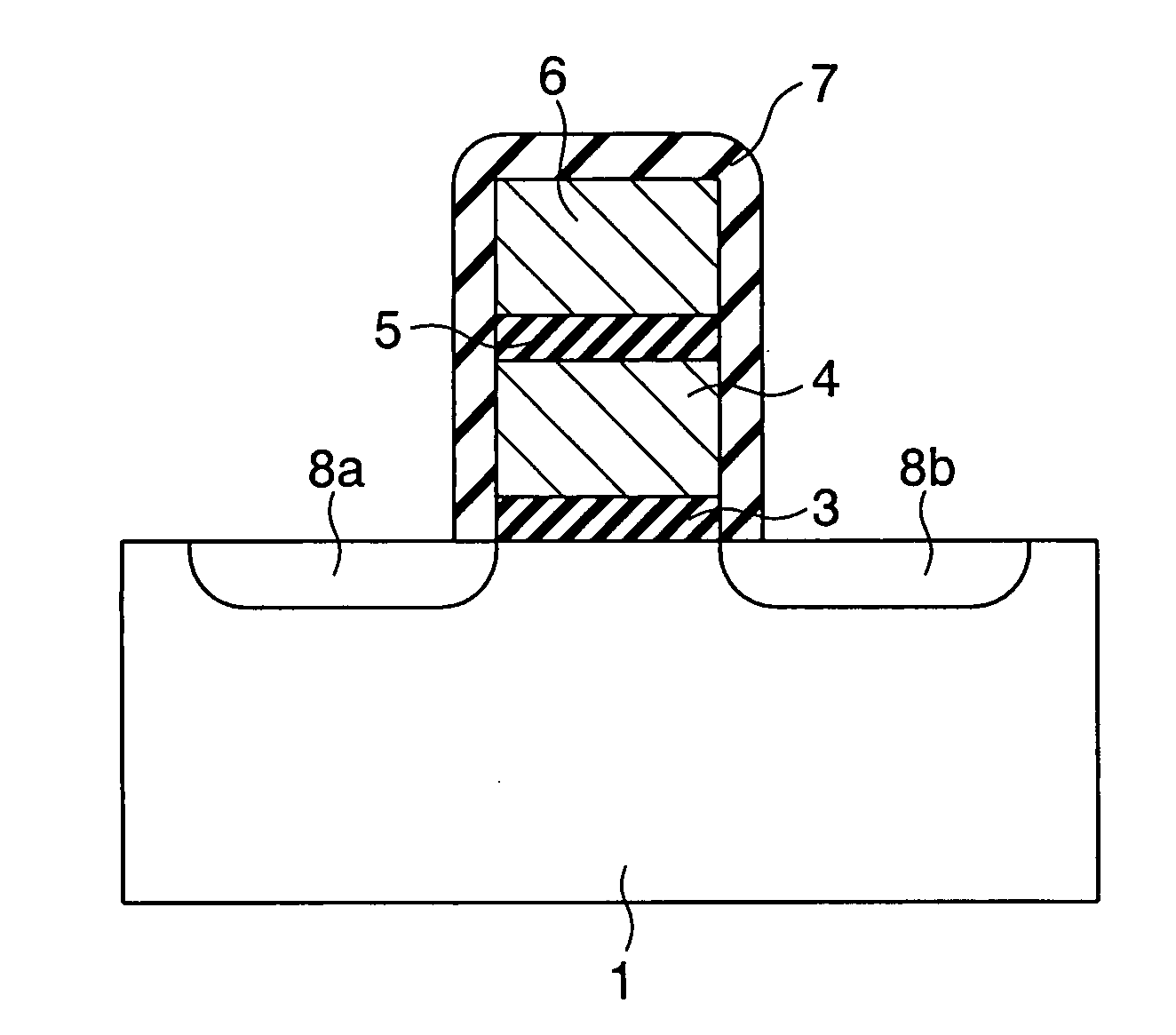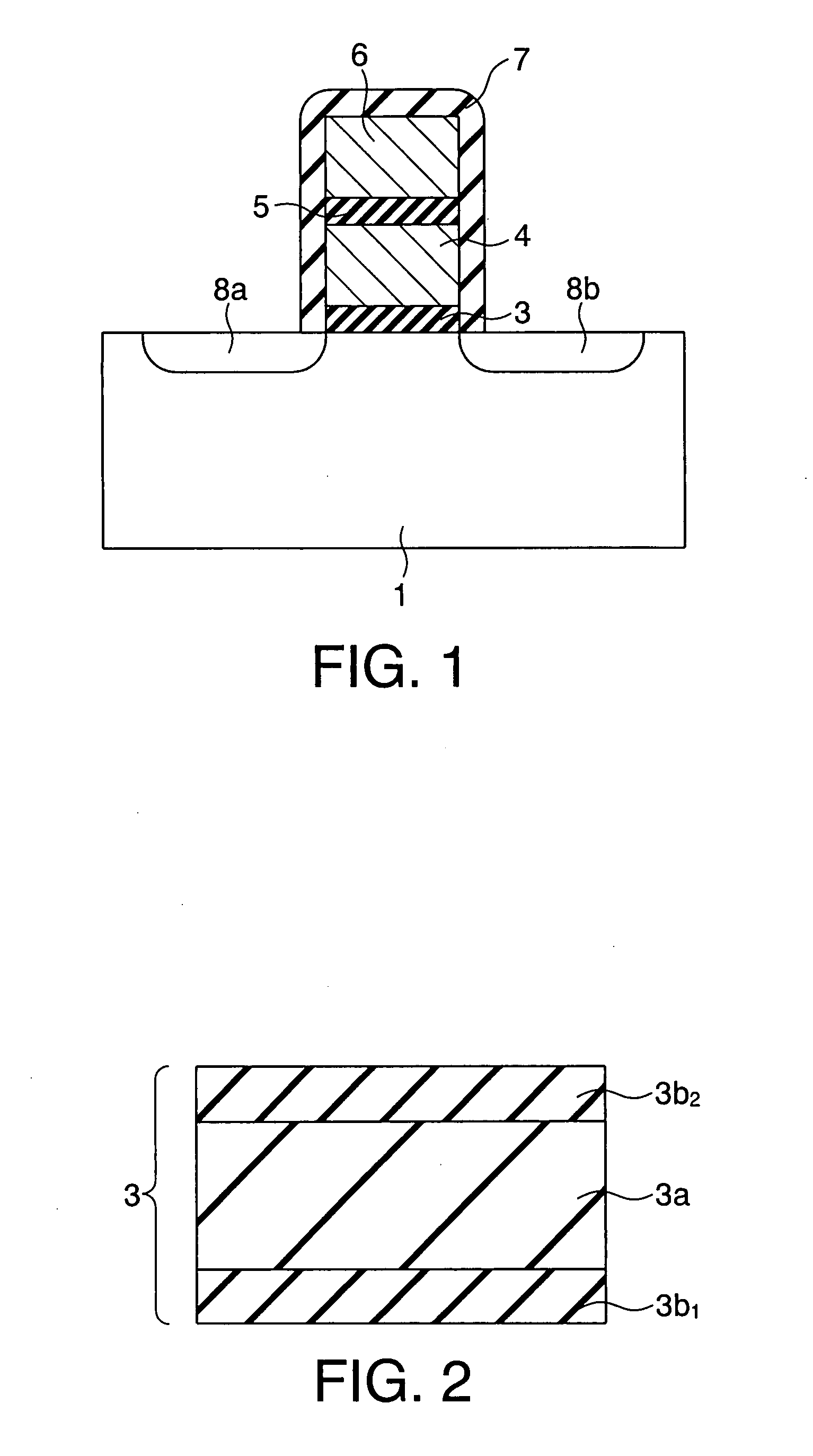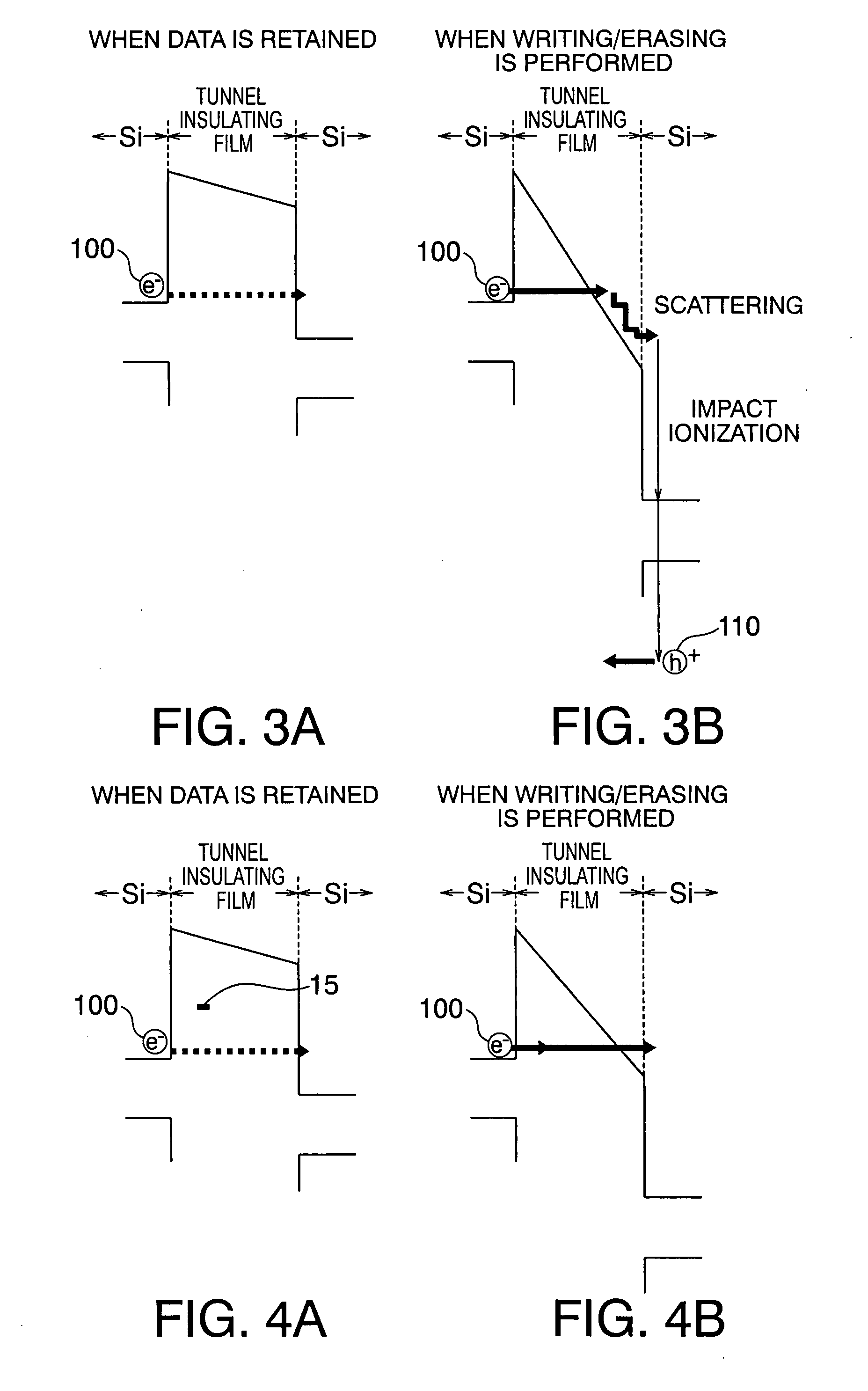Nonvolatile semiconductor memory device and method for manufacturing the same
a semiconductor memory and non-volatile technology, applied in the direction of semiconductor devices, basic electric elements, electrical appliances, etc., can solve the problems of large stress in the tunnel insulating film, increased leakage current, degraded data retention characteristics, etc., and achieve the effect of reducing stress-induced leakage current and low program voltag
- Summary
- Abstract
- Description
- Claims
- Application Information
AI Technical Summary
Benefits of technology
Problems solved by technology
Method used
Image
Examples
first embodiment
[0045]A nonvolatile semiconductor memory device in accordance with a first embodiment of the present invention includes NAND cell units arranged in a matrix form. Each of the NAND cell units includes a NAND cell formed with memory cells connected in series. Each of the memory elements has an n-type source region 8a and drain region 8b formed at a distance from each other on a p-type silicon substrate 1, as shown in FIG. 1. The n-type source region 8a and drain region 8b contain n-type impurities (such as phosphorus). A tunnel insulating film 3 is formed on a portion of the silicon substrate 1 located between the source region 8 and drain region 8b. A floating gate electrode 4 is formed on the tunnel insulating film 3. An interelectrode insulating film 5 is formed on the floating gate electrode 4. A control gate electrode 6 is formed on the interelectrode insulating film 5. The tunnel insulating film 3, the floating gate electrode 4, the interelectrode insulating film 5, and the cont...
second embodiment
[0080]Referring now to FIG. 22A through FIG. 23D, a method for manufacturing a nonvolatile semiconductor memory device in accordance with a second embodiment of the present invention is described.
[0081]First, as shown in FIG. 22A, a p-type silicon substrate 1 with a plane orientation (100) and resistivity of 10 to 20 Ωcm is prepared, and a silicon oxide layer 3b1 containing germanium, for example, is formed on the surface of the p-type silicon substrate 1. A silicon oxide layer 3a not containing germanium is then formed, as shown in FIG. 22B. A silicon oxide layer 3b2 containing germanium is then stacked, as shown in FIG. 22C. In this manner, a tunnel insulating film 3 having a layer including an injection assisting level of germanium at either interface is completed, as shown in FIG. 22D. Although the tunnel insulating film 3 is formed with silicon oxide layers in this embodiment, it is possible to employ silicon nitride layers or silicon oxynitride layers, instead of the silicon o...
third embodiment
[0092]Referring now to FIG. 25A through FIG. 26B, a method for manufacturing a MONOS (Metal-Oxide-Nitride-Oxide-Silicon)-type or SONOS (Silicon-Oxide-Nitride-Oxide-Silicon)-type nonvolatile semiconductor memory device in accordance with a third embodiment of the present invention is described.
[0093]First, the procedures in accordance with the second embodiment are carried out, up to the point where the tunnel insulating film that has the layers including the injection assisting levels formed with germanium at both interfaces is formed. A 10-nm thick silicon nitride film 9 is then formed as a charge storage layer on the tunnel insulating film 3, with the use of a mixed gas of a NH3 gas and a SiH2Cl2 or Si2Cl6 gas, as shown in FIG. 25A.
[0094]A 15-nm thick block insulating film layer 10 is then formed on the silicon nitride film 9, as shown in FIG. 25B. This block insulating film layer 10 is formed by depositing a silicon oxide film by CVD method, for example.
[0095]A conductor layer 6 ...
PUM
 Login to View More
Login to View More Abstract
Description
Claims
Application Information
 Login to View More
Login to View More - R&D
- Intellectual Property
- Life Sciences
- Materials
- Tech Scout
- Unparalleled Data Quality
- Higher Quality Content
- 60% Fewer Hallucinations
Browse by: Latest US Patents, China's latest patents, Technical Efficacy Thesaurus, Application Domain, Technology Topic, Popular Technical Reports.
© 2025 PatSnap. All rights reserved.Legal|Privacy policy|Modern Slavery Act Transparency Statement|Sitemap|About US| Contact US: help@patsnap.com



